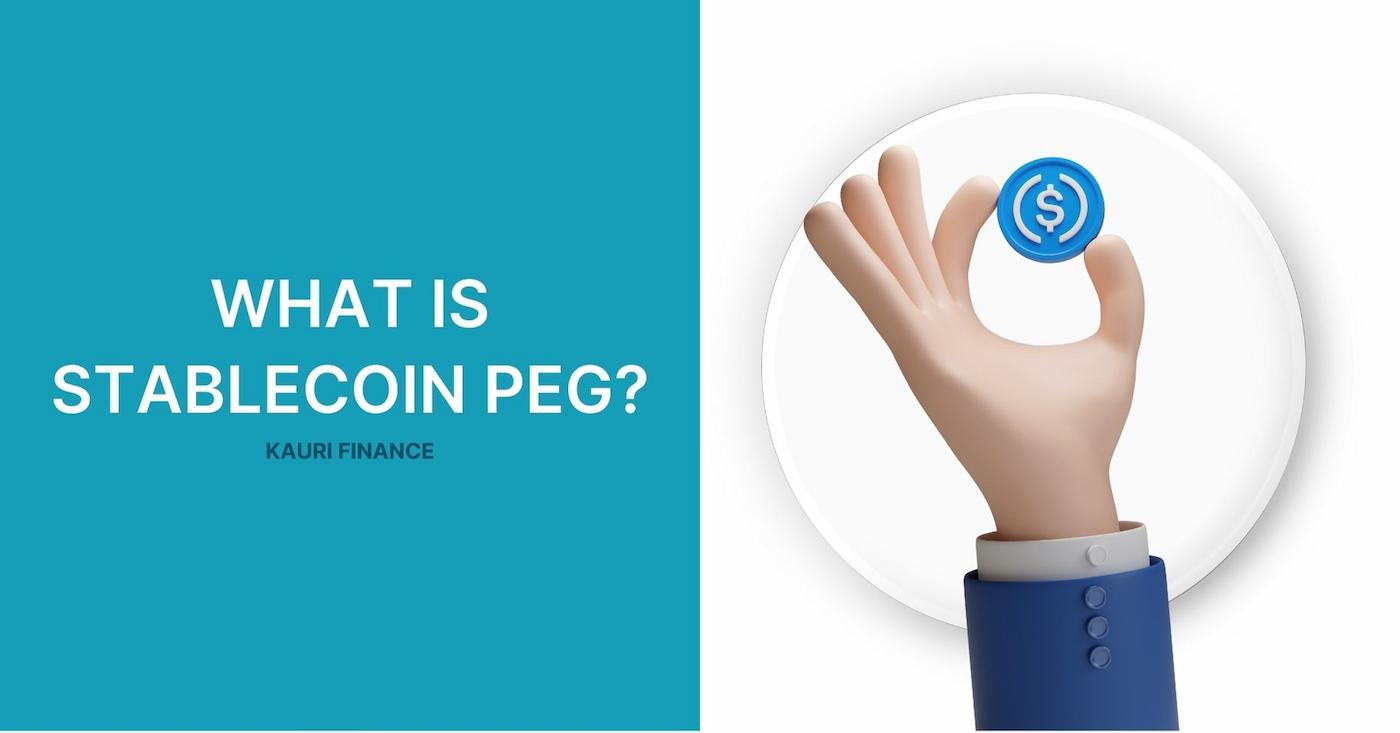
Why Do Stablecoins Depeg?
- What is Stablecoin Peg?
- Mechanisms for Maintaining the Peg
- Algorithmic (Non-Collateralized) Stablecoins
- What Leads to a Depegging Event?
- Historical Instances of Stablecoin Depegging
- Lessons Learned and the Future of Stablecoins
- Role of Regulatory Oversight
- Drawbacks of Regulatory Involvement:
- Closing Thoughts

The significance of stablecoins in today’s digital economy cannot be overstated. They facilitate smoother transactions, enhance cross-border trade, and serve as a safe haven during market turbulence. These crypto assets are meticulously designed to maintain a consistent value, serving as a vital counterbalance to the typical volatility associated with digital currencies like Bitcoin and Ethereum.
At the heart of a stablecoin's design is the "peg" — a mechanism that ties its value directly to a more stable asset, commonly a fiat currency such as the US dollar. This linkage ensures that stablecoins can offer the digital efficiency of cryptocurrencies while providing the reliable value found in traditional money.confidence.
At Kauri Finance, you will find all popular stablecoins such as USDT, USDC and FDUSD are widely used stablecoins that provide liquidity, wide market acceptance and are backed by reliable assets.
What is Stablecoin Peg?
Stablecoin peg is essentially an anchor that maintains the stablecoin's value by linking it to a more stable asset, typically a fiat currency like the US dollar. This peg is critical because it ensures that, despite the inherent volatility of the cryptocurrency market, the value of the stablecoin remains constant, making it a reliable medium for transactions, savings, and hedging against market fluctuations.
Stablecoins can be categorized based on the type of collateral backing them:
- Fiat-Collateralized Stablecoins: These are the most straightforward and common type of stablecoins. They are directly backed by fiat currency at a 1:1 ratio, meaning for every stablecoin issued, an equivalent amount of fiat currency is kept in reserve. This direct backing provides a high degree of stability and trust. Examples include USDT (Tether) and USDC (USD Coin).
- Crypto-Collateralized Stablecoins: These stablecoins are backed by other cryptocurrencies. Because the reserve cryptocurrency can also be volatile, these stablecoins often require over-collateralization — holding more reserve crypto than the stablecoins issued to absorb price fluctuations. DAI is a prominent example of a crypto-collateralized stablecoin.
- Commodity-Collateralized Stablecoins: These are backed by commodities such as gold, silver, or oil. Each stablecoin unit has a direct claim to a specific amount of the commodity stored in vaults, which can appeal to those looking for an inflation hedge or exposure to certain physical assets without the complexities of direct ownership. Pax Gold (PAXG), backed by gold, is an example.
Mechanisms for Maintaining the Peg
The stability of collateralized stablecoins relies heavily on the value of the assets held in reserve. For fiat-collateralized stablecoins, maintaining the peg is generally straightforward as long as the issuer holds enough fiat currency to back each stablecoin issued. Crypto-collateralized stablecoins, however, manage their peg through a dynamic system of collateral management, often requiring adjustments to the collateral ratio based on the market value of the backing crypto assets.
Algorithmic (Non-Collateralized) Stablecoins
Unlike their collateralized counterparts, algorithmic stablecoins do not have physical or digital assets backing them. Instead, they rely on a software algorithm to maintain their peg by controlling the supply of the stablecoin. If the market price of the stablecoin falls below the peg, the algorithm will reduce the supply by buying back and burning coins using a reserve fund or through other mechanisms. Conversely, if the price rises above the peg, the algorithm issues more stablecoins to increase supply and push the price down. This method is theoretically sound but has proven risky in practice, as seen with the collapse of algorithmic stablecoin TerraUSD (UST), highlighting the challenges of maintaining stability purely through software without underlying assets.
Both collateralized and algorithmic approaches aim to ensure that the stablecoin remains as close as possible to its target peg, but each comes with its own set of risks and operational challenges, influencing the trust and adoption rates among users in the crypto ecosystem.
What Leads to a Depegging Event?
Depegging events in stablecoins can occur due to a variety of internal and external factors, often precipitated by the complex interplay of market dynamics and psychological factors among investors. Common causes include:
- Market Volatility: Sudden swings in the market can affect the underlying assets backing stablecoins, particularly crypto-collateralized ones. If the market value of the collateral drops sharply, the stablecoin may become under-collateralized, leading to a loss of parity with the peg.
- Loss of Confidence: Trust is crucial for stablecoins, especially those that are algorithmically managed. If users begin to doubt the stability or solvency of a stablecoin, this can lead to a run on the coin, with holders trying to sell off their holdings en masse, further driving down the price.
- Liquidity Crises: If a stablecoin doesn’t have sufficient liquidity to allow for easy redemption or trading, it may struggle to maintain its peg during periods of high demand for redemptions, particularly if the reserves are not immediately accessible or sufficiently liquid.
- External Economic Factors: Factors such as bank failures or changes in regulatory landscapes can also impact stablecoin stability. For example, if a stablecoin’s reserves are held in a bank that fails or comes under financial scrutiny, access to those reserves may be compromised, undermining the stablecoin’s value.
Historical Instances of Stablecoin Depegging
Several significant depegging events have shaped the landscape of digital currencies and highlighted the vulnerabilities associated with stablecoins:
- TerraUSD (UST) - May 2022:
TerraUSD, an algorithmic stablecoin, dramatically lost its peg when its backing mechanism and the associated confidence in its sister token, LUNA, faltered. As a result, a negative feedback loop was initiated where the falling price of LUNA reduced the confidence in UST, leading to its collapse. The event erased billions in market value and affected countless investors, emphasizing the risks associated with purely algorithmic stablecoins without tangible collateral.
- USDC and DAI - March 2023:
Both USDC and DAI faced depegging incidents after the collapse of Silicon Valley Bank (SVB), Signature Bank, and Silvergate Bank, where significant portions of their reserves were held. USDC fell to as low as $0.88 on some exchanges due to fears that part of its fiat reserves might be inaccessible. DAI, which had a substantial portion of its reserves in USDC, also experienced instability. The situation was eventually stabilized with the intervention of the Federal Reserve, which helped restore confidence and the pegs of both stablecoins.
- USDR - October 2023:
USDR, backed by a combination of tokenized real estate and the DAI stablecoin, faced a depegging when a surge of redemption requests depleted its liquid DAI reserves. The illiquidity of the real estate assets made it difficult to meet further redemptions promptly, causing a crisis of confidence and a significant drop in its market value. This event underscored the challenges of managing stablecoins backed by non-traditional, less liquid forms of collateral.
These historical instances demonstrate the complex challenges facing stablecoins and the importance of robust backing, transparent operations, and adequate liquidity management to maintain stability and user trust.
Lessons Learned and the Future of Stablecoins
The series of depegging events in the stablecoin market have served as critical learning moments for issuers and regulators alike, leading to significant adjustments in the approaches to stablecoin stability:
- Enhanced Collateral Strategies: In response to these crises, many stablecoin issuers have revised their collateral strategies. This includes diversifying the types of assets held as reserves and increasing the transparency regarding these reserves. For instance, following its depegging incident, USDC issuer Circle moved to hold a larger portion of its reserves in traditional banking institutions deemed more stable and less risky.
- Importance of Transparency: Transparency has become a central theme in the recalibration of stablecoin operations. Issuers are now more forthcoming about their reserve compositions and the health of their balance sheets, which is crucial for maintaining user trust and stability in valuation.
- Technological and Operational Improvements: There's a greater emphasis on improving the technological infrastructure that supports stablecoins, including better risk management tools and more responsive mechanisms to manage supply and demand dynamically.
Role of Regulatory Oversight
The growing interest in stablecoins has inevitably drawn increased regulatory scrutiny. Regulators aim to ensure that stablecoins do not pose a systemic risk to the broader financial system and that they operate in a manner that is transparent, safe, and consistent with broader financial regulations.
Benefits of Regulatory Involvement:
- Stability and Trust: Regulatory frameworks can help ensure that stablecoin issuers maintain adequate reserves and adhere to financial practices that protect consumer interests.
- Prevention of Fraud: Regulations can reduce the risk of fraud and mismanagement, ensuring that stablecoins are a safe medium of exchange.
Drawbacks of Regulatory Involvement:
- Innovation Stifling: Excessive or poorly designed regulations might stifle innovation within the cryptocurrency space.
- Increased Costs: Compliance with regulatory frameworks can be costly, potentially raising barriers to entry and reducing competitiveness.
Closing Thoughts
Understanding the mechanisms behind stablecoin pegs is crucial for anyone involved in the cryptocurrency space, whether they are investors, users, or regulators. The stability of these digital assets is not just about maintaining parity with a fiat currency; it's about ensuring that the entire ecosystem operates in a way that is safe, transparent, and sustainable. Investors in particular must perform diligent research and exercise caution, as the landscape of digital currencies is continuously evolving.
Kauri Finance is dedicated to supporting the safe and informed use of cryptocurrencies through our innovative services. Our Web3 Wallet and crypto-friendly payment solutions are designed to enhance user security and foster trust within the digital finance ecosystem. By leveraging advanced technology and maintaining a sharp focus on user needs, Kauri Finance helps clients navigate the complex world of cryptocurrencies with confidence and ease.
